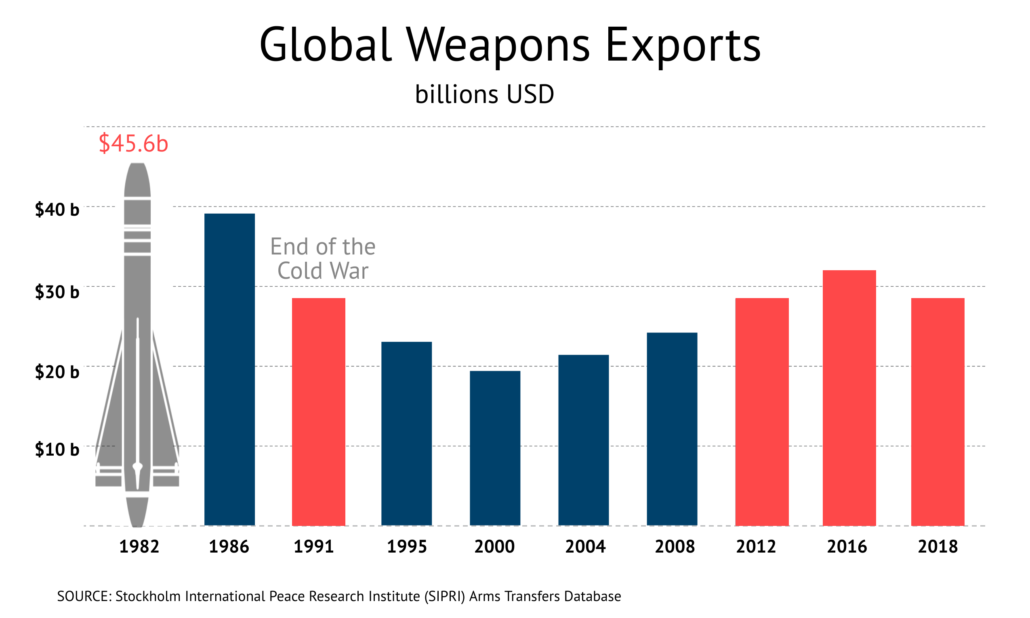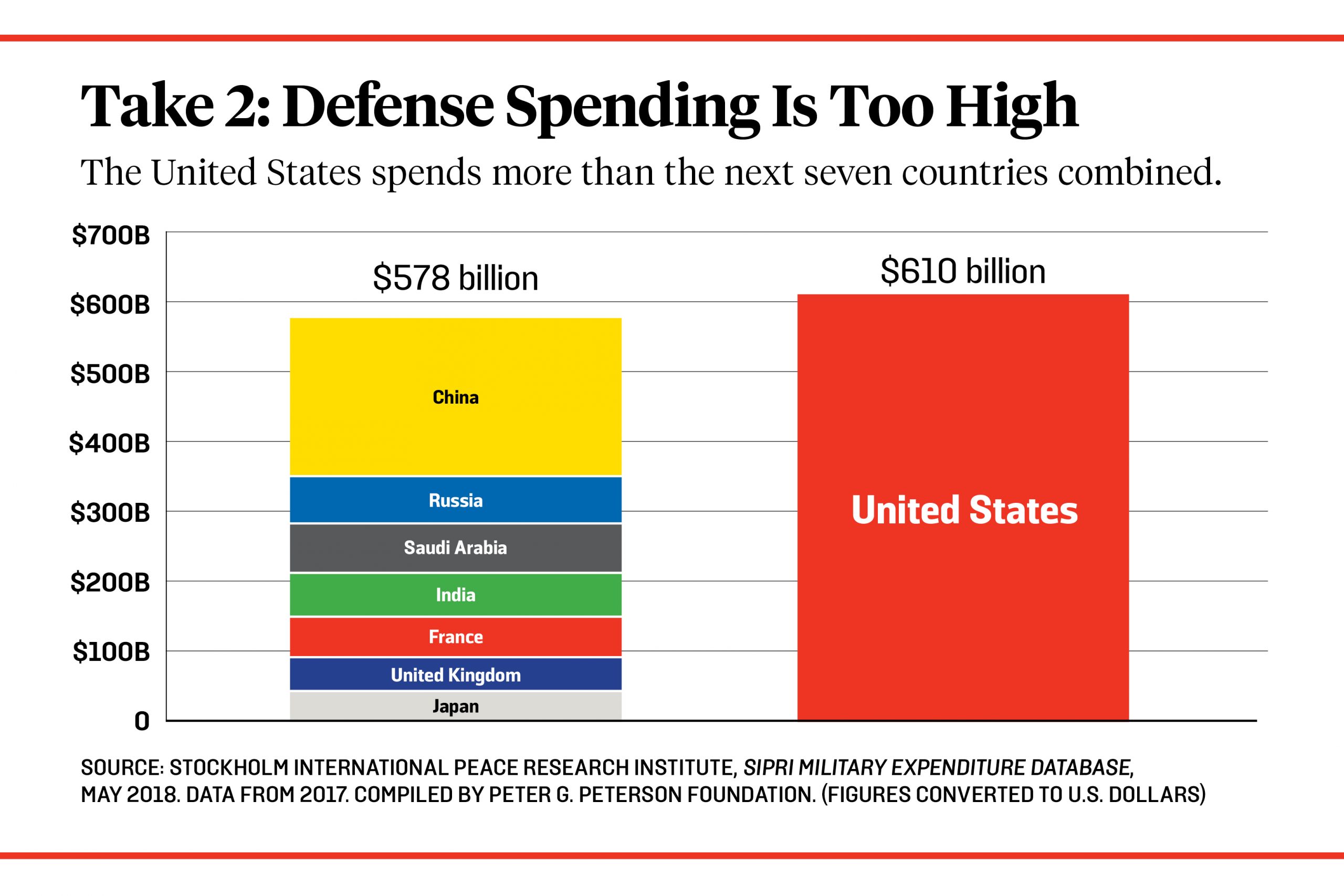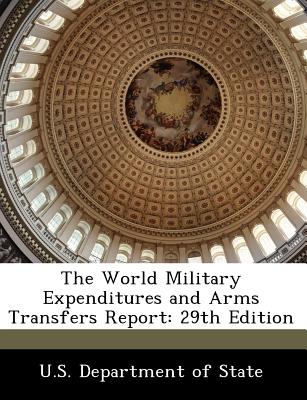“Section 5114(b)(4) of the National Defense Authorization Act for Fiscal Year 2022 repealed the 1994 statutory provision that required the Department of State to publish an edition of WMEAT every year. Consistent with this repeal, the Department of State will cease to produce and publish WMEAT,” the State Department said on its website.
The State Department said that the report it published in 2021 was the “final edition” of the WMEAT.
The discontinuation of the WMEAT reports, which reduces the US government’s transparency, comes as the US is shipping billions of dollars worth of arms into Ukraine with virtually no oversight. Since Russia invaded on February 24, the US has pledged $15.1 billion in weapons for Kyiv.
Copies of all editions of WMEAT dating from 1974 to 2021 remain publicly accessible as Adobe PDF or Excel spreadsheet documents on the pages listed below.
(December 30, 2021) — This edition of World Military Expenditures and Arms Transfers (WMEAT), WMEAT 2021, published in December 2021, covers the eleven-year period from 2009 through 2019. WMEAT responds to a statutory requirement, codified in 22 USC 2593b, that the U.S. Department of State annually publish detailed, comprehensive, and statistical information regarding military expenditures, arms transfers, armed forces, and related economic data for each country of the world, as well as in-depth analyses of arms transfers and proliferation trends. Comments, including suggestions for improvement of WMEAT and identifications of apparent errors, may be addressed to WMEATeditor@state.gov.

Overview
WMEAT figures, especially for armed forces personnel, military expenditures, and arms transfers, are neither so accurate nor so reliable as uniform presentation in statistical tables might seem to imply. This may be due to incompleteness, ambiguity, or total absence of data for some countries either in those parameters or in parameters, such as GDP price deflators or exchange rates, used in Table I to convert local-currency-denominated values for military spending and GDP to U.S. dollars.
In Table I, apparent sources of error and extent of imprecision vary across countries, years, and parameters, and are indicated by color-coding on the pages for specific countries. In Tables II, III, and IV, the quality of source data for arms transfer values is not readily assessable. In no table does either rounding or limitation on significant digits adequately reflect potential inaccuracy.

Military Expenditures
From 2009 through 2019, in constant 2019 U.S. dollar terms, the annual value of world military expenditures appears to have risen about 1 percent to 11 percent, from a possible range of $1.82 trillion to $2.66 trillion in 2009 to a possible range of $1.94 trillion – $2.96 trillion in 2019, and to have averaged between $1.81 trillion and $2.76 trillion per year over the 11-year period.
This range of values results from WMEAT’s use of five different methods to convert non-U.S. military expenditures to U.S. dollars. Using a real market exchange rate (MER) with a base year of 2019 for each country yields the lowest period-average value for annual global military expenditures; using the purchasing power parity rate for each foreign country’s whole economy (PPP-for-GDP) yields the highest such value.

Military Burden (ratio of military expenditures to GDP)
During the 11-year period the share of global GDP to which global military expenditure was equivalent – an indicator sometimes called “the military burden” – appears to have averaged between 1.9 percent and 2.4 percent, trending downward. Converting non-U.S. military expenditures and GDPs to U.S. dollars using a real MER yields the greatest period-average military burden; converting non-U.S. GDPs at PPP-for-GDP while converting non-U.S. military expenditures at a notionally estimated defense-sector-specific PPP rate yields the lowest period-average military burden.
Throughout the period, military spending accounted for a far lower share of measured global economic output than in 1989, at the end of the Cold War, when it appears to have been about 4.7 percent at a real MER.

Armed Forces
The number of people serving in the world’s armed forces appears to have fallen about 3 percent in absolute terms over the period covered in WMEAT 2021, from about 21.1 million persons in 2009 to about 20.4 million in 2019, troughing at about 20.2 million in 2016. From 2009 to 2019, the world total of armed forces personnel appears to have fallen about 14 percent in per capita terms, from about 0.31 percent to about 0.27 percent of total population.
It appears to have fallen by about 13 percent as a proportion of the labor force, from about 0.68 percent in 2009 to about 0.59 percent in 2019. Armed forces personnel as a share of the labor force appears to have trended downward over the period in every region, for every quintile of world population ranked by GDP per capita, and for every quintile of world population ranked by NGO-assessed degree of democracy.
From 2009 through 2019, world military expenditures per armed forces member – an indicator of the capital-intensivity of the military – appear to have risen by 4 percent to 15 percent; results vary depending on which method of converting non-U.S. military expenditures to U.S. dollars is used. Military spending per armed forces member appears to have risen for every economic and political group of countries and in all regions except North America, East Africa and Southern Africa.
The world ratio of military spending per armed forces member to GDP per labor force member – an indicator of the capital-intensivity of the military relative to that of the economy as a whole – appears to have trended downward for the eleven-year period, and to have trended downward most sharply in North America and East Africa and among the most democratically governed quintile of the world’s population.

Arms Transfers
From 2009 to 2019, the global annual value of international arms transfer deliveries appears to have averaged about $204 billion in constant 2019 U.S. dollar terms, and to have risen by about 25 perecent, from about $169 billion in 2009 to about $212 billion in 2019. The arms trade’s share of world trade in goods and services appears to have ranged from about 0.8 percent to about 1.0 percent, averaging about 0.9 percent of world trade, with no clear increasing or decreasing trend.
During the eleven-year period covered in WMEAT 2021, about 79 percent of world arms trade by value appears to have been supplied by the United States, about 10 percent by the European Union, about 5 percent by Russia, and less than 2 percent by China. There was no clear trend in U.S., EU or Russian market share during the period, but China’s market share grew.
Countries in the richest quintile of world population appear to have accounted for about 97 percent of world arms exports and more than 60 percent of world arms imports, regardless of whether quintiles are based on national GDP per capita at a real MER or at PPP. By either standard, the richest quintile was the only GDP-per-capita quintile with a positive arms trade balance.
Countries in the most democratic quintile of world population appear to have accounted for about 91 percent of world arms exports and 47 percent of world arms imports. The most democratic quintile was the only degree-of-democracy quintile with a positive arms trade balance.
In constant 2019 U.S. dollar terms, U.S. arms exports appear to have averaged about $162 billion per year, while U.S. arms imports – of arms merchandise only, inasmuch as no data on U.S. arms imports in the form of services are readily available – appear to have averaged about $6 billion per year. Over the period, the arms trade surplus of the United States may have offset as much as 28 percent of its total trade deficit.
Between 63 percent and 65 percent of U.S. arms exports appear to have been delivered to countries in the richest quintile of world population, which appear to have sourced between 82 percent and 83 percent of their arms imports from the United States. About 51 percent of U.S. arms exports appear to have been delivered to countries in the most democratic quintile of world population, which appear to have sourced about 86 percent of their arms imports from the United States. Of U.S. arms exports, about 20 percent appear to have gone to multinational entities or entities not specified by the governmental exporting or export licensing authority.
Both the growth in the world arms trade and the high proportion of world arms imports supplied by the U.S. appear to have been due largely to reliance on the United States as a source of arms by other rich, democratically-governed countries.
Posted in accordance with Title 17, Section 107, US Code, for noncommercial, educational purposes.







